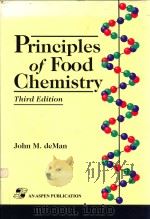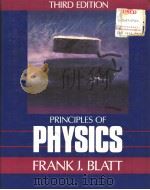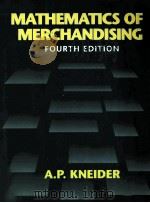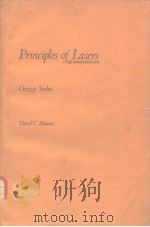《PRINCIPLES OF LASERS THIRD EDITION》
| 作者 | ORAZIO SVELTO DAVID C.HANNA 编者 |
|---|---|
| 出版 | PLENUM PRESS |
| 参考页数 | 494 |
| 出版时间 | 没有确切时间的资料 目录预览 |
| ISBN号 | 0306429675 — 求助条款 |
| PDF编号 | 811953698(仅供预览,未存储实际文件) |
| 求助格式 | 扫描PDF(若分多册发行,每次仅能受理1册) |

1.Introductory Concepts1
1.1.Spontaneous and Stimulated Emission, Absorption1
1.1.1.Spontaneous Emission1
1.1.2.Stimulated Emission2
1.1.3.Absorption3
1.2.The Laser-Idea4
1.3.Pumping Schemes6
1.4.Properties of Laser Beams8
1.4.1.Monochromaticity8
1.4.2.Coherence8
1.4.3.Directionality10
1.4.4.Brightness11
1.4.5.Short Time Duration12
1.5.Organization of the Book12
Problems13
2.Interaction of Radiation with Matter15
2.1.Introduction15
2.2.Summary of Blackbody Radiation Theory15
2.3.Absorption and Stimulated Emission24
2.3.1.Rates of Absorption and Stimulated Emission24
2.3.2.Allowed and Forbidden Transitions28
2.3.3.Line-Broadening Mechanisms30
2.3.3.1.Homogeneous Broadening30
2.3.3.2.Inhomogeneous Broadening36
2.3.3.3.Concluding Remarks and Examples40
2.3.4.Transition Cross Section, Absorption, and Gain Coefficient42
2.4.Spontaneous Emission44
2.4.1.Semiclassical Approach44
2.4.2.Quantum Electrodynamic Approach47
2.4.3.Einstein Thermodynamic Treatment49
2.4.4.Relation between Spontaneous Lifetime and Cross Section52
2.4.5.Concluding Remarks52
2.5.Nonradiative Decay53
2.6.Saturation57
2.6.1.Saturation of Absorption: Homogeneous line58
2.6.2.Gain Saturation: Homogeneous Line62
2.6.3.Inhomogeneously Broadened Line65
2.7.Decay of a Many-Atom System66
2.7.1.Radiation Trapping66
2.7.2.Superradiance and Superfluorescence66
2.7.3.Amplified Spontaneous Emission68
2.8.Degenerate Levels70
2.9.Molecular Systems73
2.9.1.Energy Levels of a Molecule73
2.9.2.Level Occapation at Thermal Equilibrium78
2.9.3.Radiative and Nonradiative Transitions79
2.9.4.Quantum Mechanical Calculation of the Radiative Transition Rates82
Problems85
References88
3.Pumping Processes91
3.1.introduction91
3.2.Optical Pumping92
3.2.1.Pumping Eflciency96
3.2.2.Radiative and Transfer Efficiencies97
3.2.3.Pump Light Distribution103
3.2.4.Absorption and Power Quantum Eficiencies108
3.2.5.Concluding Remarks110
3.3.Electrical Pumping111
3.3.1.Physical Characteristics of Discharges113
3.3.2.Electron Impact Excitation116
3.3.2.1.Electron Impact Cross Section117
3.3.2.2.Electron Energy Distribution120
3.3.2.3.Spatial Distribution of the Pump Rate124
3.3.2.4.The Ionization Balance Equation126
3.3.2.5.Pump Rate Calculation127
3.3.3.Excitation by (Near) Resonant Energy Transfer129
Problems132
References134
4.Passive Optical Resonators137
4.1.Introduction137
4.2.Some Topics from Geometrical and Wave Optics141
4.2.1.Matrix Formulation of Geometrical Optics142
4.2.2.The Fabry-Perot Interferometer148
4.2.3.Multilayer-Dielectric Coatings155
4.3.Photon Lifetime and Cavity Q159
4.4.Plane-Parallel Resonator161
4.4.1.Approximate Treatment161
4.4.2.Fox and Li Treatment163
4.5.Confocal Resonator170
4.6.Gaussian Beam Propagation and the ABCD Law179
4.7.Generalized Spherical Resonator184
4.7.1.Mode Amplitudes184
4.7.2.Resonance Frequencies and Diflraction Losses186
4.7.3.Stability Condition188
4.8.Unstable Resonators192
4.8.1.Geometrical-Optics Description193
4.8.2.Wave-Optics Description197
4.8.3.Advantages and Disadvantages of Hard-Edge Unstable Resonates199
4.8.4.Variable-Reflectivity Unstable Resonators200
Problems202
References206
5.Continuous Wave and Transient Laser Behavior207
5.1. Introduction207
5.2.Rate Equations207
5.2.1.Four-Level Laser207
5.2.2.Three-Level Laser210
5.3.CW Laser Behavior217
5.3.1.Four-Level Laser217
5.3.2.Three-Level Laser219
5.3.3.Optimum Output Coupling220
5.3.4.Laser Tuning221
5.3.5.Single-Mode Versus Multimode Oscillation223
5.3.5.1.Reasons for Multimode Oseillation223
5.3.5.2.Single-Mode Oscillation225
5.3.6.Two Numerical Examples232
5.3.7.Frequency Pulling and Limit to Monochromaticity238
5.3.8.Lamb Dip and Active Stabilization of Laser Frequency240
5.4.Transient Laser Behavior243
5.4.1.Relaxation Oscillations in Single-Mode Lasers244
5.4.2.Spiking Behavior of Multimode Lasers248
5.4.3.Q Switching248
5.4.3.1.Methods of Q Switching250
5.4.3.2.Operating Regimes256
5.4.3.3.Theory of Active Q Switching258
5.4.3.4.A Numerical Example263
5.4.4.Gain Switching265
5.4.5.Mode Locking266
5.4.5.1.Methods of Mode Locking272
5.4.5.2.Mode-Locking Systems278
5.4.6.Cavity Dumping281
5.5.Concluding Remarks283
Problems284
References285
6.Types of Lasers287
6.1.Introduction287
6.2.Solid-State Lasers287
6.2.1.The Ruby Laser288
6.2.2.Neodymium Lasers290
6.2.2.1.Nd:YAG290
6.2.2.2.Nd:Glass292
6.2.2.3.Other Crystalline Hosts293
6.2.3.Alexandrite Laser294
6.3.Gas Lasers296
6.3.1.Neutral Atom Lasers297
6.3.1.1.Helium-Neon Lasers298
6.3.1.2.Copper and Gold Vapor Lasers302
6.3.2.Ion Lasers304
6.3.2.1.Argon Laser305
6.3.2.2.He-Cd Laser308
6.3.3.Molecular Gas Lasers309
6.3.3.1.The CO2 Laser310
6.3.3.2.The CO Laser323
6.3.3.3.The N2 laser325
6.3.3.4.Excimer Lasers327
6.4.Liquid Lasers (Dye Lasers)331
6.4.1.Photophysical Properties of Organic Dyes331
6.4.2.Characteristics of Dye Lasers335
6.5.Chemical Lasers339
6.5.1.The HF Laser340
6.6.Semiconductor Lasers342
6.6.1.Photophysical Properties of Semiconductor Lasers343
6.6.1.1.Energy States in a Semiconductor344
6.6.1.2.Level Occupation at Thermal Equilibrium346
6.6.1.3.Radiative and Nonradiative Transitions347
6.6.1.4.The Quasi-Fermi Levels348
6.6.2.Semiconductor-Laser Pumping350
6.6.2.1.The Homojunction Laser350
6.6.2.2.The Double-Heterojunction Laser352
6.6.3.Semiconductor Laser Devices and Their Performance354
6.6.4.Semiconductor Laser Applications358
6.6.5.Simplified Theory of a Semiconductor Laser359
6.7.Color-Center Lasers363
6.8.The Free-Electron Laser366
6.9.X-Ray Lasers370
6.10.Summary of Performace Data372
Problems374
References376
7.Properties of Laser Beams379
7.1.Introduction379
7.2.Monochromaticity379
7.3.Complex Representation of Polychromatic Fields380
7.4.Statistical Properties of Laser Light and Thermal Light381
7.5.First-Order Coherence383
7.5.1.Degree of Spatial and Temporal Coherence384
7.5.2.Measurement of Spatial and Temporal Coherence387
7.5.3.Relation Between Temporal Coherence and Monochromaticity390
7.5.4.Nonstationary Beams391
7.5.5.Spatial and Temporal Coherence of Single-Mode and Multimode Lasers392
7.6.Directionality394
7.6.1.Beams with Perfect Spatial Coherence394
7.6.2.Beams with Partial Spatial Coherence397
7.7.Laser Speckle400
7.8.Brightness404
7.9.Comparison Between Laser Light and Thermal Light405
7.10.Higher-Order Coherence406
Problems408
References410
8.Laser Beam Transformation: Propagation, Amplification, Frequency Conversion, Pulse Compression411
8.1.Introduction411
8.2.Transformation in Space: Gaussian Beam Propagation412
8.3.Transformation in Amplitude: Laser Amplification418
8.4.Frequency Conversion: Second-Harmonic Generation and Parametric Oscillation424
8.4.1.Physical Picture425
8.4.1.1.Second-Harmonic Generation425
8.4.1.2.Parametric Oscillation432
8.4.2.Analytical Treatment435
8.4.2.1.Parametric Oscillation437
8.4.2.2.Second-Harmonic Generation441
8.5.Transformation in Time: Pulse Compression444
Problems453
References454
Appendixes459
ASemiclassical Treatment of the Interaction of Radiation with Matter459
B Space-Dependent Rate Equations465
C Theory of Active Mode Locking for a Homogeneous Line471
D Physical Constants477
Answers to Selected Problems479
Index487
《PRINCIPLES OF LASERS THIRD EDITION》由于是年代较久的资料都绝版了,几乎不可能购买到实物。如果大家为了学习确实需要,可向博主求助其电子版PDF文件(由ORAZIO SVELTO DAVID C.HANNA PLENUM PRESS 出版的版本) 。对合法合规的求助,我会当即受理并将下载地址发送给你。
高度相关资料
-

- PRINCIPLES OF ECONOMICS THIRD EDITION
- 1994 PRENTICE HALL
-

- PRINCIPLES OF LASERS
- 1976
-

- PRINCIPLES OF HEAT TRANSFER THIRD EDITION
- 1973 HARPER INTERNATIONAL EDITION
-

- PRINCIPLES OF INSTRUMENTAL ANALYSIS THIRD EDITION
- 1985 SAUNDERS COLLEGE PUBLISHING
-

- Principles of Marketing Third Edition
- 1986 Prentice-Hall
-

- Principles of food chemistry third edition
- 1999 Aspen Publishers
-

- PRINCIPLES OF THERMODYNAMICS THIRD EDITION
- 1920 HENRY HOLT AND COMPANY
-

- PRINCIPLES OF ECONOMICS THIRD EDITION
- 1947 GINN AND COMPANY
-

- WESTERN CIVILIZATION
- 1994 HOUGHTON MIFFLIN COMPANY
-

- PRINCIPLES OF PHYSICS THIRD EDITION
- 1989 ALLYN AND BACON
-

- PRINCIPLES OF FINANCE THIRD EDITION
- 1995 BLACK WELL PUBLISHERS
-

- PRINCIPLES OF MACROECONOMICS THIRD EDITION
- 1994 PRENTICE HALL
-

- PRINCIPLES OF MICROECONOMICS THIRD EDITION
- 1994 PRENTICE HALL
提示:百度云已更名为百度网盘(百度盘),天翼云盘、微盘下载地址……暂未提供。➥ PDF文字可复制化或转WORD

